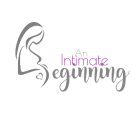SPECIFIC LEARNING OBJECTIVES:
1. Develop or identify documents that will be used in the student’s personal practice.
2. Describe the benefits and risks of available birth settings.
3. Identify clients that are good candidates for direct-entry midwifery care at the initial interview, and assess throughout the
prenatal period for complications that necessitate collaboration or referral.
4. Be able to identify the components of a comprehensive health and obstetric, gynecologic and reproductive health history.
5. Identify pregnancy through recognition of signs and symptoms, history-taking, physical assessments, and laboratory testing.
6. Calculate the estimated date of birth and assess gestational period through query about LMP, bimanual exam, and/or urine
pregnancy testing.
7. Perform a routine prenatal care exam, including gestational assessment, abdominal assessment, fetal growth assessment,
monitoring of the fetal heart rate, fetal well-being assessment, pelvic examination, and clinical pelvimetry.
8. Perform ongoing history at each prenatal visit.
9. Describe components of the physical examination that evaluate potential for a healthy pregnancy.
10. Be able to perform a complete abdominal assessment including measuring fundal height, determining fetal lie, position,
and presentation, evaluation of fetal growth using manual measurements or techniques, and auscultation of the fetal heart
rate.
11. Describe physiological and emotional changes in pregnancy.
12. Understand the midwifery standards of care and guidelines in regard to prenatal care.
13. Have a basic understanding of common complaints and complications of pregnancy and non-pharmacological remedies for
those complaints.
14. Describe the Occupational Safety and Health Administration (OSHA) standards that apply to midwifery care during the
prenatal period, including specific infection prevention and control strategies.
15. Assume administration and management tasks and activities, including but not limited to compliance with work safety
regulations (i.e. OSHA compliance).
16. Demonstrate facilitation of the informed decision making process and provision of individualized care, counseling,
collaboration and referral as indicated, evident throughout all documents.
17. Identify pre-existing factors and factors that develop anytime during the childbearing cycle that make out-of-hospital birth
an unsafe option.
18. Identify signs, symptoms and indications for referral of selected complications and conditions of pregnancy that affect
either the pregnant person or fetus.
19. Provide health education to clients (adolescents and adults) and their families about normal pregnancy progression,
warning signs and symptoms, and when and how to contact the midwife.
20. Provide routine education specific to pregnancy, including appropriate hygiene in pregnancy, considerations for work inside
and outside the home, components of preparation of the home/family for the newborn, and common techniques to
physically prepare for labor.
Midwives College of Utah. (2022). MDWF 2010- Prenatal Care I: Foundations of Prenatal Care
